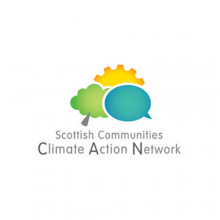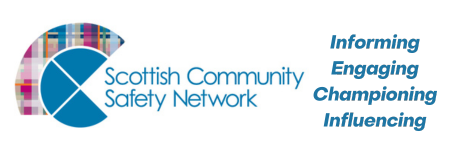
By Joana Avi-Lorie
Story Weaver at Scottish Communities Climate Action Network
I know we are not powerless, but we cannot underestimate the difficulties of changing the stories that makes us think we are. This need to change the story has led many authors, speakers, and community leaders to focus on the empowerment of others, and to develop tools to enable people, particularly in deprived settings to think about power and what power means.
But can we be empowered without unpacking the idea of power itself? I believe that community power and community empowerment are a key clog in the mechanism of a just transition and of surviving and adapting to climate change. However, there’s an itchy question in my mind when thinking about power. I am reminded of images of previously powerless who used power no differently than the powerful. For those interested in change, like me, it is also intuitive to place the so-called powerless against the so-called powerful. Is it effective? Perhaps by acting on power itself and stretching the boundaries to fields of social action and social justice without reproducing that traditional concept of power, we can move beyond empowerment to transforming power.
Through my journey as a community climate Story Weaver, I began to pay attention to the stories told by and among communities in Scotland under the light of this idea of transforming power. There are three rules in creating a good story: character, character, character. Plot trumps character. So here are three plot points I pinned down through this field observation with no real method to it, only a great deal of curiosity and an even greater deal of hope.
Caring About One Another
A few months ago, I listened to comedy piece by George Carlin called ‘The Planet is Fine’. I didn’t like it. I am too serious – as I believe everyone should be – about environmentalism and climate action to enjoy jokes about it. But something that George Carlin said in this piece pierced me like a spear on fire, it stuck with me for days in a way that things that I like and find clever, and poetic often don’t. He said (read it in an angry tone): “Save the planet? We don’t even know how to take care of ourselves yet! We haven’t learned how to care for one another and we’re gonna save the ******* planet?!”
To me, he was not funny but he was right. And I believe that learning to care for one another is one the ways that we are transforming power withing community climate action. It is a revolution, a massive transgression and yet something so simple. Even when we don’t completely understand the science behind planting a tree, even if we are making up ways of measuring the impact of our activities as we go, we do it gladly because we do it with a friend or two. We realized that caring about one another is the only way of really caring for ourselves too and the only way to begin to care for our shared places, places that stretch and touch to form a planet, suspended in the silent space. But before all that, there is us – friends, family, neighbours caring about one another.
Vison of the Future
When I was a child, I read ‘old’ science fiction, borrowed from my father’s shelves – Orwell, Wells, K. Dick. I watched The Matrix and Gattaca and then I had to read and watch everything again later to really understand it. I watched cyberpunk anime at night in friends’ houses because my parents thought, and they were right, that it was too violent for me. At the time, those stories told me the future and it wasn’t a future I was particularly excited about.
Every hauntingly beautiful commercial for a new futuristic smart phone, a new futuristic smart phone smart accessory, a new futuristic smart pair of shoes, a new futuristic smart way of paying my bills left me feeling cheated on and sad about a future that was dystopian and where all the things, people and animals I loved and cared about had no place.
Until recently, when I walked by a community garden with my cousin and heard myself saying with genuine excitement ‘look, that is the future!”. I am excited about living in a future with family, friends, security, a sense of meaning and a good environment as a baseline right, as what is normal, mundane, expectable.
While some companies develop sophisticated marketing strategies and very well told stories that pull our heartstrings, communities don’t just talk the talk – they walk the walk. They tell the truth and the show the truth. Community climate action vision of the future is not expensive marketing, is not government propaganda, it is not complex psychological manipulation for profit. These people are real. The happiness, the hope they give me is real. Their vision of the future is not only irresistible but bluntly honest and that is the second way that these communities are transforming power, in this case the power that a vision holds over our minds.
Belonging
During SCCAN’s Community Led Climate Action Gathering, the brilliant and inspiring Alastair MacIntosh spoke of communities of place in a way that I keep going back to. He said that “a person belongs as much as they are willing to cherish and be cherished by this place and its peoples.”
Belonging, connectedness, and interdependence are positively linked with human well-being. Belonging is prioritized by most people and creates the meanings attributed to and derived from the activities of different people, from different cultures and backgrounds.
When we belong, we care about one another, and we care about the place that welcomes and nourishes us. This is a sense of identity that doesn’t need nationalist fantasies and fallacies in policy to work. Social justice, human rights and community transformative power emerges from the sense of belonging and it pushes progress without the need of ‘tyrannical radical limitations’ without context.
I see community climate action as a beacon of light in a future where I can be happier, safer and flourish alongside my local environment. This is why I want to learn and share your stories.
